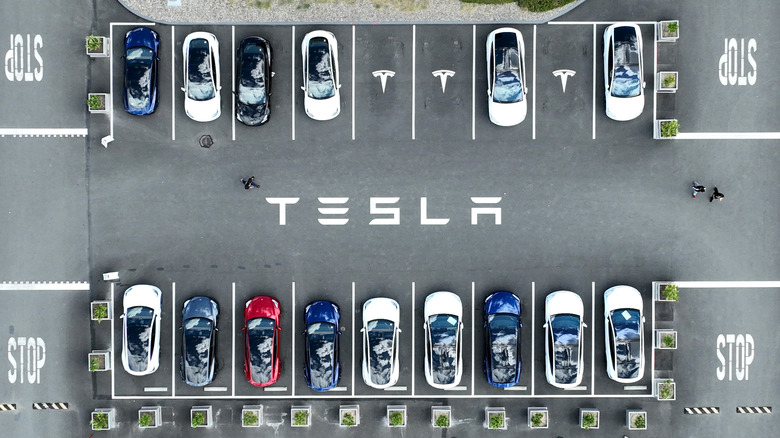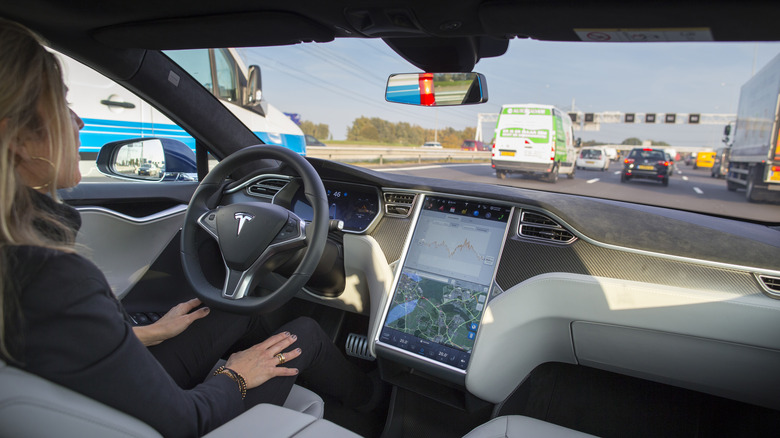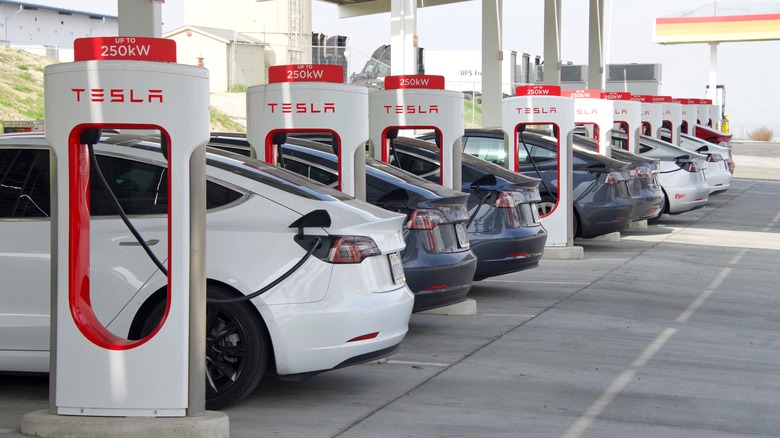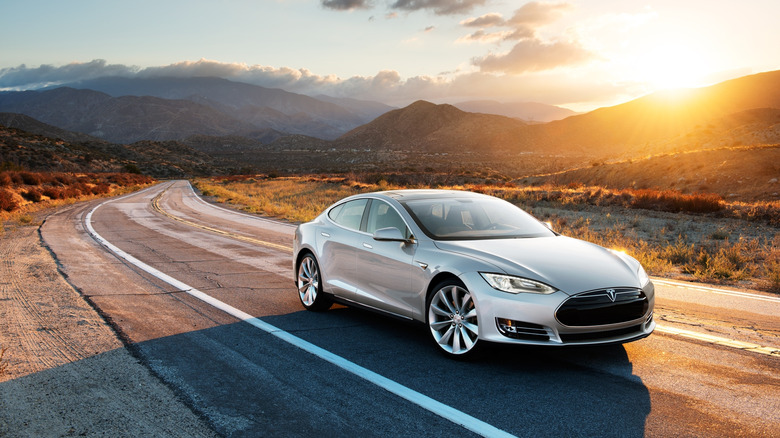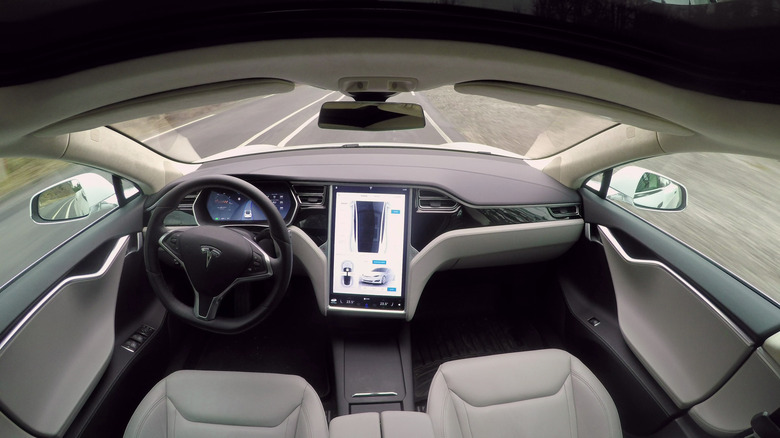5 Tesla Features That Make These EVs Stand Out From The Crowd
Tesla hardly needs an introduction. With a commitment to pushing boundaries and reimagining the driving experience, Tesla has introduced groundbreaking features that set their EVs apart from the crowd. These innovations have propelled Tesla to the forefront of the electric vehicle revolution, captivating the imagination of drivers worldwide.
When it comes to Tesla vehicles, it quickly becomes evident that they offer something truly extraordinary. Each model embodies the vision and ingenuity of Tesla's engineers, resulting in a cohesive blend of cutting-edge technology, exceptional performance, and sustainable design. Tesla's relentless pursuit of excellence has given rise to a range of distinctive features that have captivated the attention of automotive enthusiasts and environmentally conscious consumers.
In this article, we will explore five standout features that make Tesla EVs exceptional. From their unmatched range to their advanced autopilot capabilities and innovative charging infrastructure, Tesla vehicles have redefined what it means to drive an electric car.
Autopilot
Introduced in 2014, Tesla Autopilot, or advanced driver assistance system (ADAS), is one of the things that put Tesla on the map. It incorporates a range of features that utilize external cameras and powerful vision processing, enabling improved safety measures on the road.
One of the core features of Autopilot is Traffic-Aware Cruise Control, which automatically adjusts the vehicle's speed to maintain a safe distance from the car ahead. This reduces driver fatigue during long drives and enhances overall driving comfort. Autosteer is another notable feature that assists with steering, helping to keep the vehicle within its lane on well-marked highways. Together, these features provide speed and lane assistance, making driving more effortless and enjoyable.
Tesla's Enhanced Autopilot also includes other capabilities, such as Navigate on Autopilot, Auto Lane Change, Autopark, and Summon. In addition to these driving assistance features, Autopilot incorporates active safety measures such as Automatic Emergency Braking, Traffic and Stop Sign Control, and Blind Spot Monitoring. These safety features further enhance the driver's situational awareness and help mitigate potential accidents.
It is important to note that Autopilot is not a fully autonomous system. Tesla emphasizes that drivers must remain attentive and in control at all times. Driver supervision is crucial, as Autopilot is classified as a Level 2 system, offering partial driving automation. In any case, it's the combination of all these features that puts Tesla ahead of most, if not all, auto manufacturers out there.
Supercharger network
Tesla's Supercharger network, launched in 2012, has expanded globally, with over 40,000 stalls across 4,500 stations worldwide — a feature that puts Tesla on its own hill.
The Supercharger network utilizes DC fast charging technology, using Tesla's proprietary connector, enabling Tesla vehicles to recharge rapidly. Superchargers offer remarkable charging speeds, capable of replenishing up to 200 miles of range in just 15 minutes. This fast-charging capability outpaces many rival networks, providing Tesla owners with a significant advantage in terms of charging convenience and reducing range anxiety.
In addition to that, Tesla Supercharger stations are strategically located at various places, including major cities, coastal areas, and transit corridors. The Tesla app and vehicle's trip planner help owners easily locate nearby Superchargers, enhancing the overall user experience. Moreover, Tesla's Supercharger network has a cost advantage over rival charging networks. Tesla's ability to keep the cost of deploying Superchargers significantly lower than its competitors contributes to its charging infrastructure's affordability and widespread availability.
Looking to the future, Tesla plans to open its Supercharger network to other EV manufacturers. This move is driven by the potential access to $7.5 billion in EV funding, indicating Tesla's commitment to expanding the charging infrastructure for the broader EV community.
Long electric range
With impressive range capabilities, Tesla vehicles offer drivers convenience and peace of mind, eliminating concerns about running out of power during their journeys. Tesla's range achievements are notable, with the Model S leading the pack, providing a range of 405 miles according to Tom's Guide, and the Model 3 Long Range with a range of 358 miles. While the honor of longest range for an EV goes to the Lucid Air Dream Edition (Range), Tesla dominates the rest of the leaderboard. These range figures place Tesla vehicles at the forefront of the electric vehicle market, surpassing many of their competitors while enabling drivers to embark on longer trips with fewer charging stops.
Tesla's Supercharger network, combined with the long electric range, changes the game altogether. It means that drivers have access to fast charging stations strategically located along their routes, minimizing charging time and maximizing travel efficiency.
Compared to other EVs, Tesla's long electric range feature positions the brand as a leader. While luxury EV SUVs may fall short in terms of build quality and range, the Tesla Model Y stands out with its impressive range of up to 330 miles. The consistent focus on range improvement and battery technology advancements allows Tesla to maintain its competitive advantage and also allows their vehicles to offer superior range capabilities.
Infotainment and touchscreen interface
Even the infotainment setup sets Tesla apart from the electric vehicle (EV) crowd, offering convenience, innovation, and an intuitive user interface. At the heart of Tesla's infotainment system is its centerpiece: the touchscreen display. Ranging in size from 15 to 17 inches, depending on the model, the touchscreen acts as a control center for accessing various vehicle settings, entertainment options, and information. Its high-resolution display and responsive touch capabilities make navigating through menus and interacting with the system easy.
The design of Tesla's interface focuses on simplicity and minimalism. The clean and uncluttered layout presents essential information and controls in an organized manner, reducing distractions while driving. The interface incorporates a dark mode for enhanced visibility at night, and its sleek aesthetic complements the modern design of Tesla vehicles.
One of the key advantages of Tesla's infotainment system is its seamless integration with the vehicle's functionality. Users can control various features such as climate control, suspension settings, and even access the Autopilot system directly from the touchscreen. The system also provides real-time energy monitoring, displaying detailed information about energy consumption and efficiency, allowing users to optimize their driving habits.
Tesla's infotainment system offers a comprehensive range of features to enhance the driving experience. Users can enjoy a variety of entertainment options, including streaming music, podcasts, and internet radio. Additionally, the system supports Bluetooth connectivity, enabling seamless integration with smartphones for hands-free calling and media playback.
Over-the-air updates
Tesla's OTA updates are delivered remotely through cellular or Wi-Fi connections. Users can easily access these updates by checking for them on the vehicle's touchscreen or through the Tesla mobile app. Connecting the vehicle to Wi-Fi ensures faster and more reliable delivery of updates. Tesla's software update preferences can also be adjusted to receive updates as soon as they become available.
The frequency and importance of Tesla's OTA updates make them a key differentiating factor. A Tesla Model 3 owner who tracked and analyzed 67 software updates received since 2018 found that Tesla leads other EV manufacturers in terms of software advancements. These updates range from minor bug fixes to important updates and very important updates that introduce new features and improvements.
While many automakers offer software over-the-air (SOTA) updates, Tesla goes a step further by continuously improving both its software and firmware through OTA updates. This allows Tesla to enhance various aspects of its vehicles, including range, power, safety, and driver-assistance features, to continuously improve the overall ownership experience. These updates contribute to Tesla's significant software advantage and demonstrate its commitment to shaping the future of the automotive industry.
